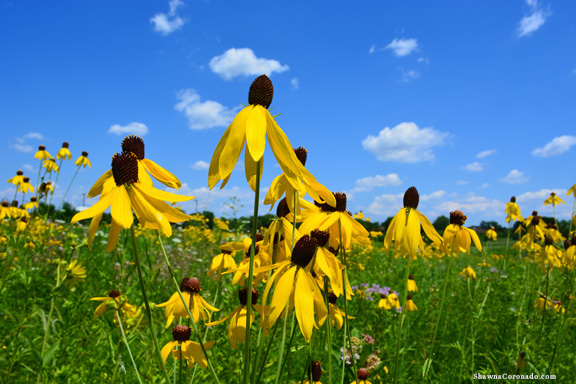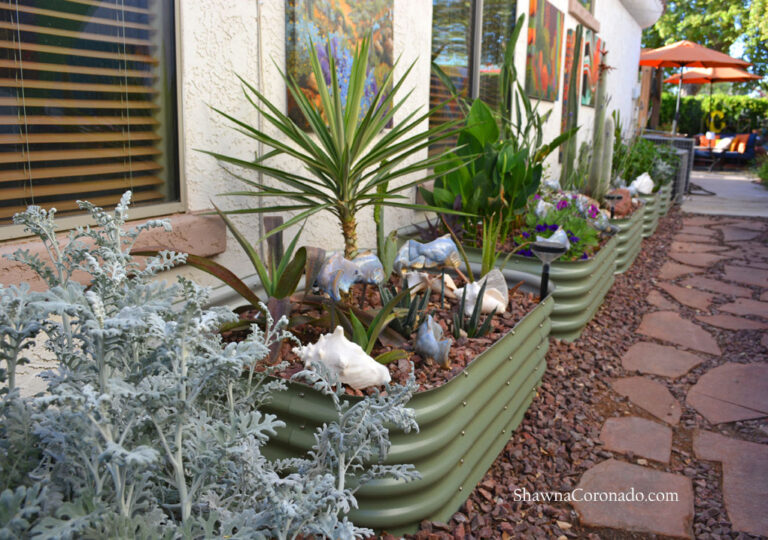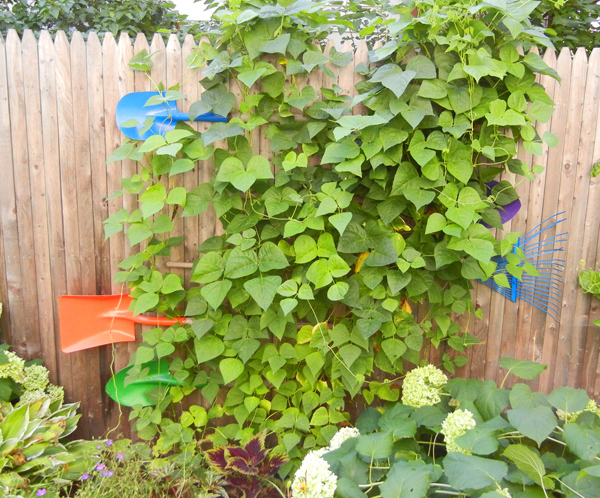Native Plants are a Smart Garden Choice

Whether mixed in heavily or lightly in your landscape, native plants and wildflowers are an amazing addition to any garden, both for their beauty and their value to the environment. Native plants attract favorable insects, butterflies, songbirds, hummingbirds, and wildlife that live in your specific region of the state. They eliminate the need for pesticides or herbicides, require very little watering once established, and offer a gorgeous contribution to the modern landscape. This excerpt, below, from my book the Illinois Getting Started Garden Guide tells why.
Native Plants Solve Problems
Consistently, native plants are the superheroes in your garden as they solve many challenging problems. For example, do you have heavy clay soil in your garden? Native plants have deeper roots that break up hard clay naturally. If you have a particularly wet spot on your property where grass won’t grow and other perennials drown, a native plant rain garden could solve that problem. Native plants have the ability to soak up large quantities of water, particularly if you plant water-loving natives. Alternately, the same water-loving plants will survive drought, wind, and other harsh conditions and come back swinging like a champ. There is a native plant to solve nearly any landscaping difficulty.
As convenient problem-solvers in the garden, native plants can be intermingled amongst traditional perennials, trees, and shrubs as working tools that help you in preparing trees for bad weather and with your difficult landscaping issues. They are also solutions we should all be tapping into for our environment.
Ecological Value
Encouraging biodiversity in your landscape means you are creating a more sustainable landscape that requires less maintenance and work. Native plants require minimal watering, survive difficult and variable conditions, can have four-season interest, and can live for decades. Planting natives creates a wildlife habitat, which can be a beautiful contribution to your birding or pollinator garden. More important, by bringing insects, birds, amphibians, and mammals into your landscape, you are solving a problem: the more wildlife you have, the fewer bad insects you’ll have eating the plants. Native wildlife, particularly birds, eat seeds and insects.
Use native plants to help your greater community with stormwater management: natives are excellent in rain gardens, bio-retention areas, and wetland retention basins because they slow down and absorb masses of rainwater, enabling a reduction in the magnitude and speed of stormwater run-off issues.
Native plants are often deer resistant. With well over 500,000 deer in the state [of Illinois where I currently live], planting more native plants makes common sense if your garden is plagued by the animal. Deer do not prefer the aromatic foliage of wild bergamot or the painful barbs of prickly pear cactus, for instance. A deer-resistant garden is possible if you use a mix of the right native plants.
Beautiful Gardens
In recent years, native gardens have received praise for their low chemical needs and water retentiveness, but harsh criticism as well for their wild look in a traditional garden. Planting natives in a design just as you would a more traditional landscape tree, shrub, or perennial, and then maintaining it properly means that your garden can look attractive, not weedy or wild.
Native flowering vines, shrubs, trees, and wildflowers offer an enormous range of textures, colors, and shapes to create astounding seasonal displays. Whether you’re designing a natural prairie or a contemporary urban landscape design, natives should be a part of your plan. You’ll solve soil and insect problems, create a haven for pollinators and other wildlife, enjoy more success in your entire landscape plan, and help the environment as well.
If you would like more ideas on how to grow all types of plants, particularly native plants and wildflowers from the Midwest, please get the Illinois Getting Started Garden Guide.




